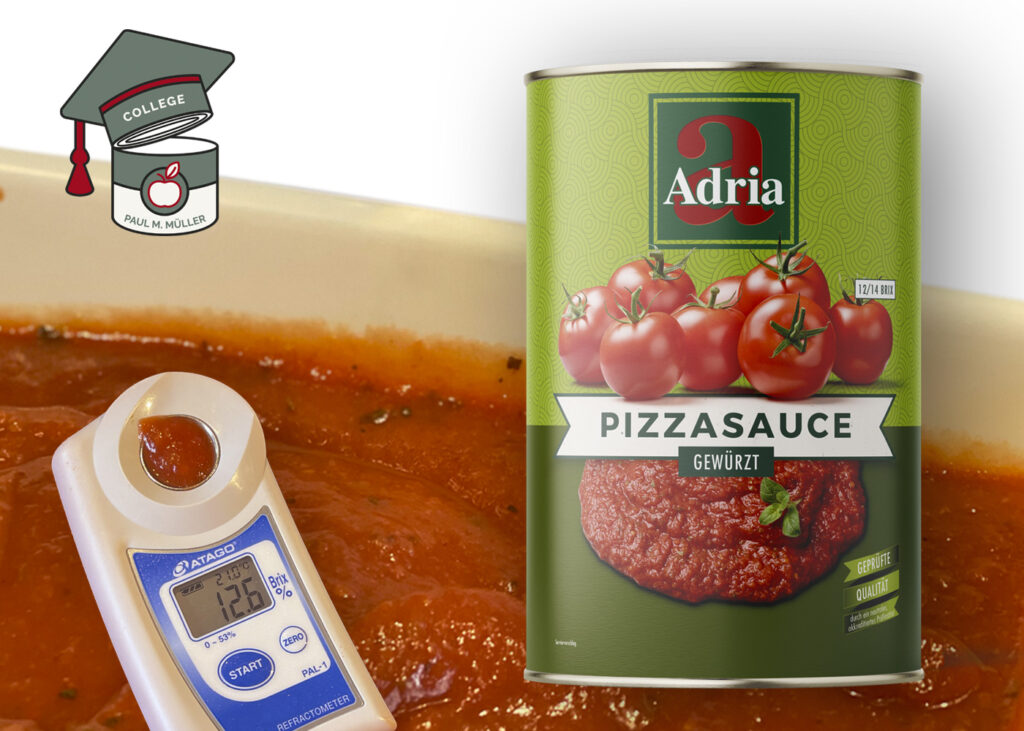29/03/2022
Our new product guide for trainees, professionals and anyone interested. This time we ask: How long do the contents of a canned good last once opened? PMM College clarifies.
It's currently a boom time for tomatoes: We therefore take a look at the subject of Brix (-content). Brix is an important quality characteristic in our tomato products, but not everyone is familiar with it. The Brix value is expressed in degrees Brix (°Bx) and is a unit of measurement of the relative density of liquids. It indicates how much dissolved sugar is in a liquid solution and is determined with a refractometer. In the food industry, the refractometer is mainly used in the wine, fruit, vegetable and beverage industries for quality control to measure the sugar content. The hand-held devices used enable fast, simple and reliable measurement. For example, 25 °Bx means that there are 25 g of sugar in 100 g of a solution. A fresh sun-ripened tomato from the field usually has a natural Brix content between 4.8 - 5.0 °Bx.
The higher the Brix content, the "higher quality" the product is for the cook. He saves on boiling down the tomatoes for his sauce or no longer needs to add tomato paste to obtain a creamy end product. Every amateur chef knows that when fresh tomatoes are pureed or chopped and simmered over medium heat, water evaporates and after a while we get a creamy tomato sauce. The longer you boil down, the higher the Brix content becomes.
With PMM's whole, peeled tomatoes (2650 ml can), a thickened juice (tomato puree with approx. 7.5 °Brix) is also added during production. Both together, the natural sweetness of the tomato and that of the puree, result in the final product of about 6 - 6.5 °Bx. This is a Brix content that is wonderful to work with in the professional kitchen. Speaking of tomato paste, 3 times concentrated: In this PMM product, we arrive at a very high content of 36 - 38 °Bx. Here it is important to pay special attention to quality and balance during production, so that the taste of fruitiness and sweetness is not lost with such a high concentration. By the way, wine lovers are certainly familiar with the degree Oechsle, a physical unit of measurement belonging to the range of density. It indicates the must weight of the unfermented grape must. The must weight, in turn, is the measure of the dissolved substances - mainly sugar - in the must. It can be used to determine the potential alcohol content of the subsequent wine.

you can reach us Monday - Friday from 7:30 - 17:00.
